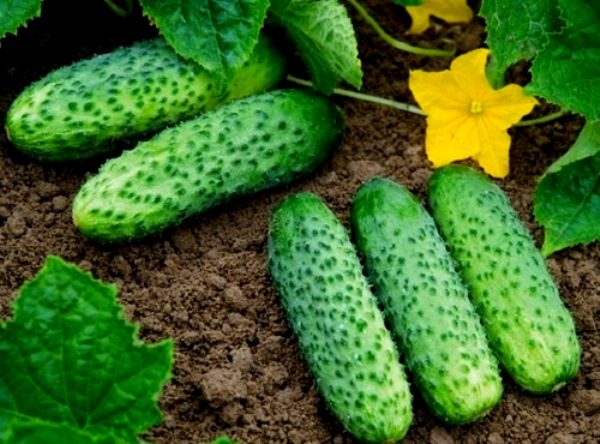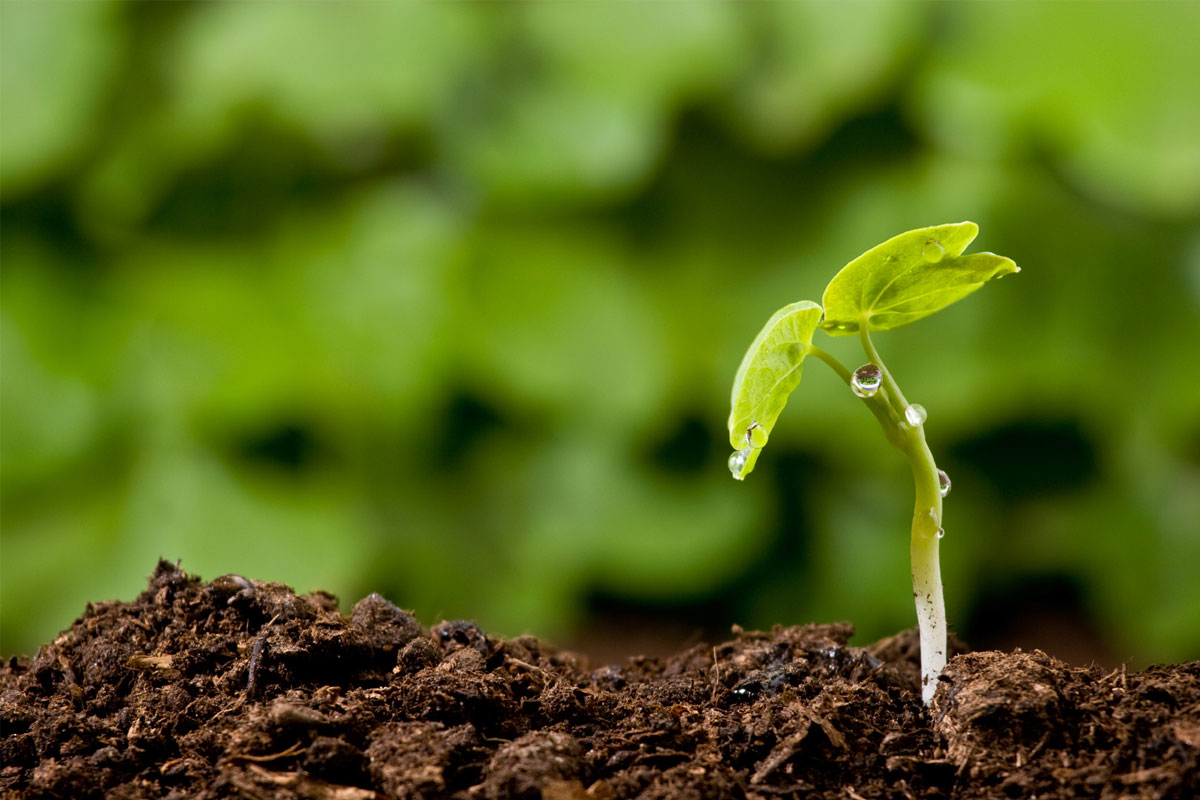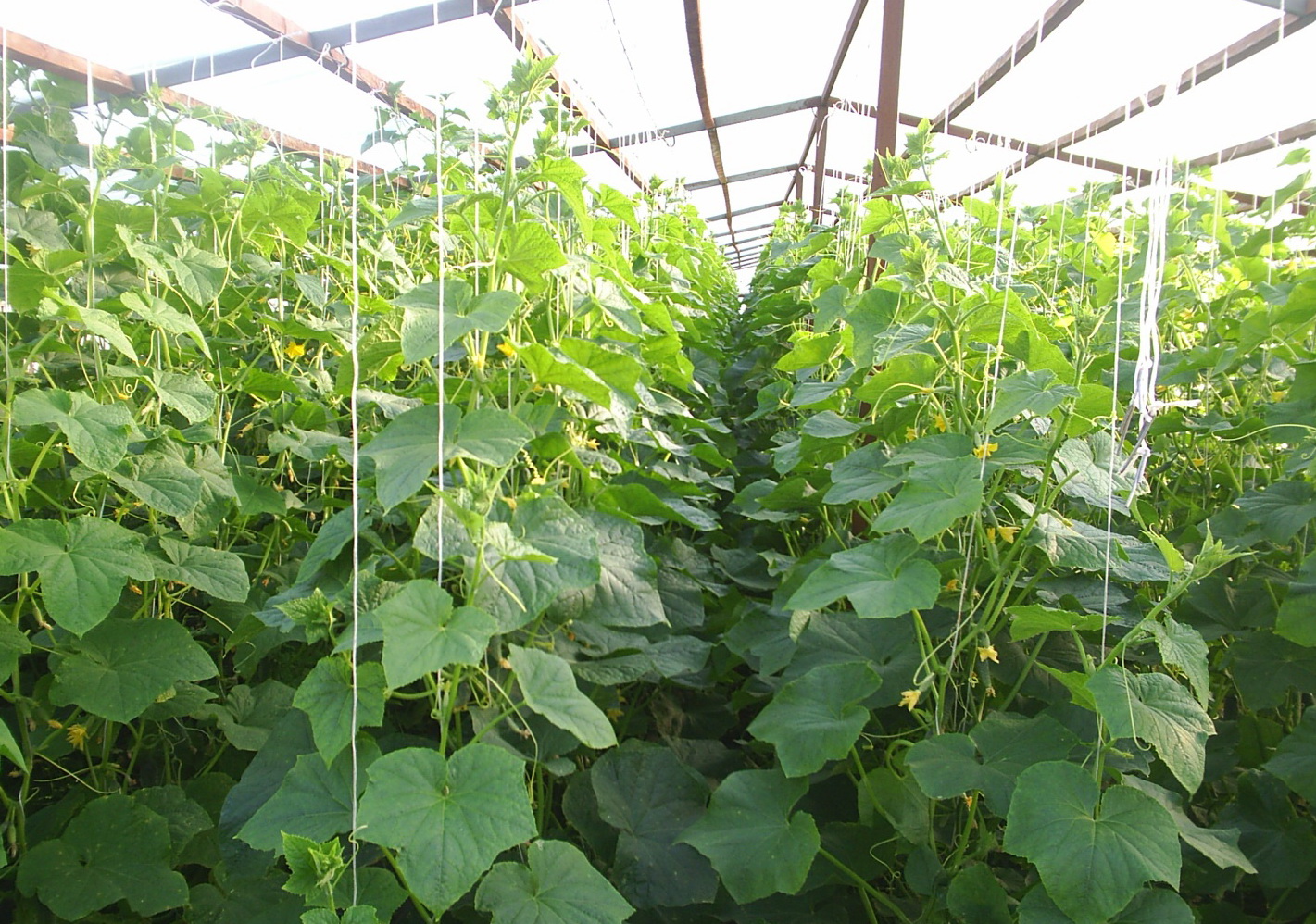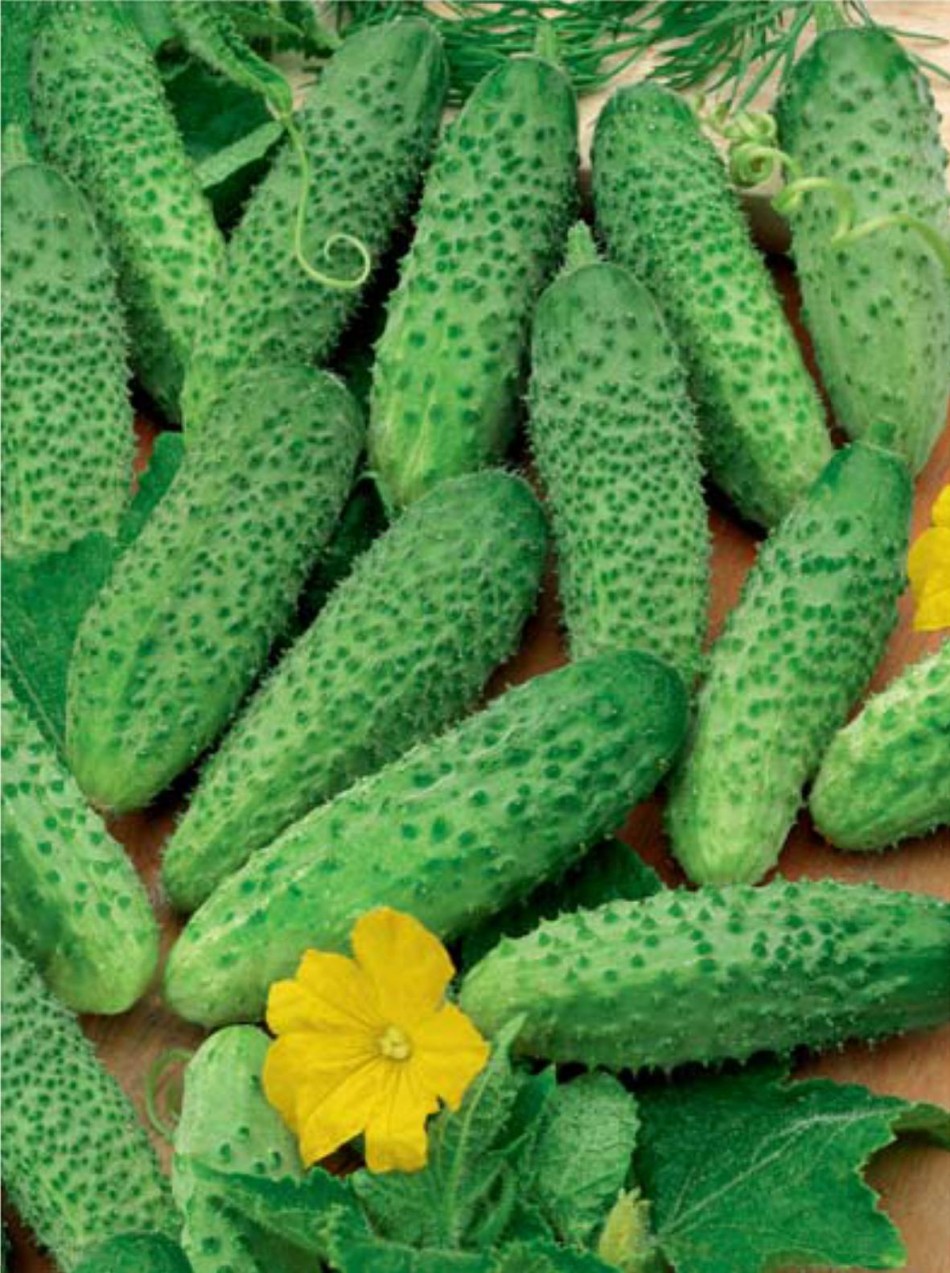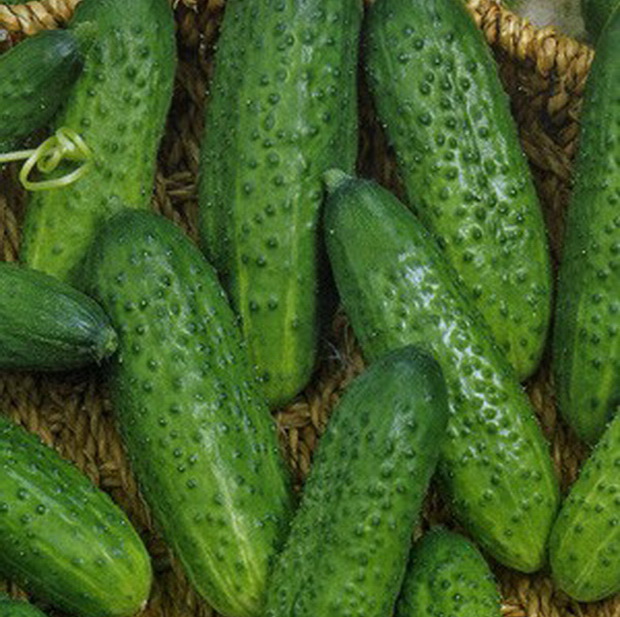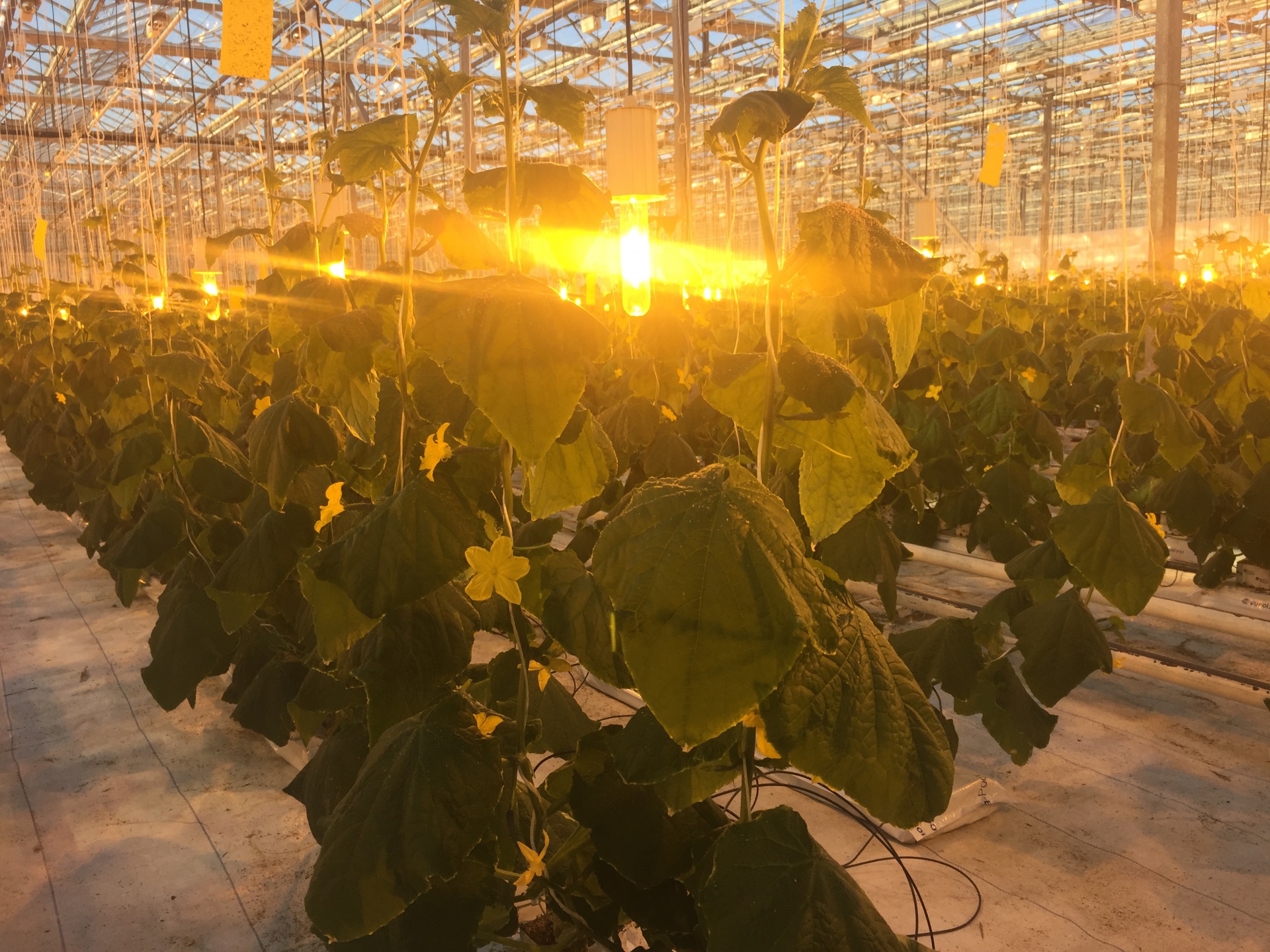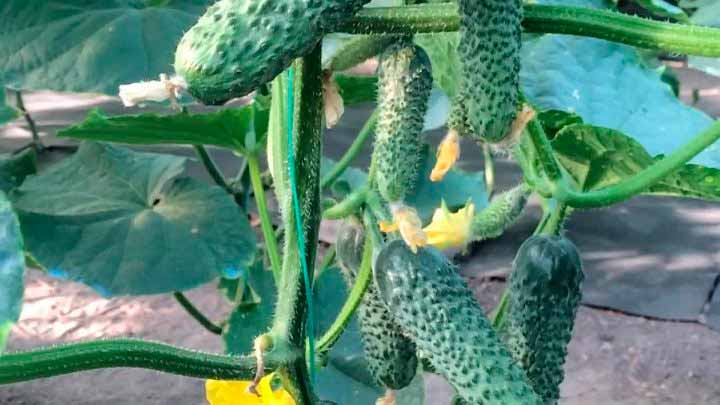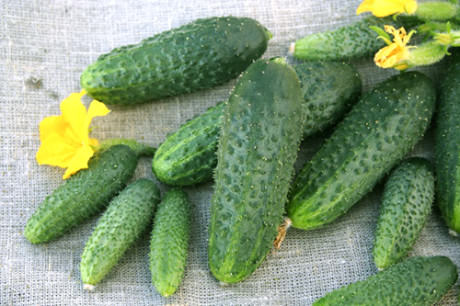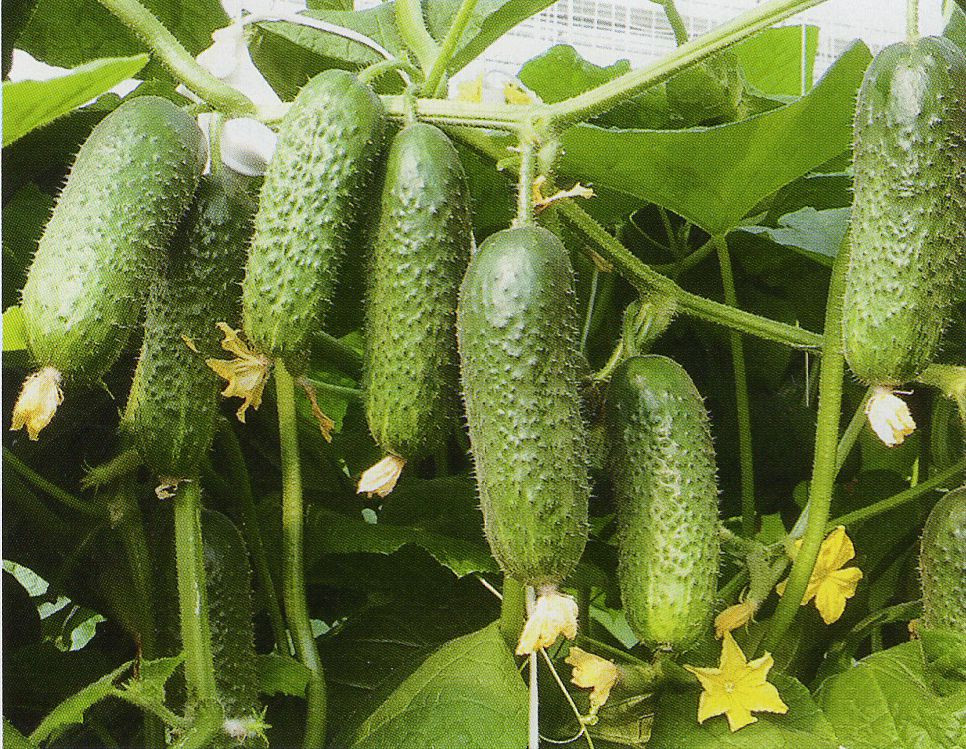Content:
Cucumber Masha F1 was bred by breeders living in Holland. Copyright holder - MONSANTO HOLLAND B.V. The variety was entered in the State Register of Breeding Achievements of Russia in 2000. But there are also Mashenka cucumbers. This variety was bred recently, it was entered in the State Register in 2015. Mashenka cucumbers were bred by the breeder from Russia E. I. Kudryavtseva.
There is also a variety Baba Masha F1, it was entered in the State Register in 2013. Maria cucumbers were also bred, they were entered in the State Register in 2015.
Description of cucumbers Masha
The bushes have thick stems. There are up to 5 cucumbers per node. In the open area, the length of the lashes is up to 0.6-0.7 m, and in the greenhouse - up to 1 m. The leaves are wide, emerald hue.
Fruit characteristic: dark green, cylindrical. 8.5-9 cm long, 3-3.5 cm wide. Fruits of excellent taste. Their weight is about 100 g. Tubercles and whitish pubescence are visible on them.
Advantages
The advantages of the variety:
- parthenocarpic (flowers do not need to be pollinated);
- the plant is determinant, that is, when the first flower cluster grows, the bush stops growing, but lateral shoots appear;
- very early (that is, Masha cucumbers begin to be removed from the bushes 37 days after the first sprouts);
- the variety is transportable, vegetables can be transported over great distances;
- fruits are not bitter, they have a wonderful dessert taste;
- grows in 95% of marketable fruits:
- can be planted both in a greenhouse and in open ground;
- cucumbers can be eaten raw, salted, pickled;
- the variety has a high yield, you can remove 2 kg from a bush, in a greenhouse they remove 11 kg from 1 m²;
- cucumber bushes are resistant to TMV, powdery mildew and olive spot.
There is only one drawback: this is a hybrid, that is, you cannot collect seeds from cucumbers grown on the site and sow them, you can only buy.
Site requirements
Choose a sunny location that is sheltered from the wind. The land should be light. Sandy loams or light loams are well suited.
Groundwater should not be higher than 2.5 m. Cucumbers belong to the pumpkin family, because of this they should not be planted in the place where representatives of this family grew before, since they have the same diseases and insect pests.
Attention! A site where nightshades, legumes, cabbage, onions, potatoes, green manure grew are well suited. The land must be fertile. [/ Alert]
It is necessary to scatter in the fall 3 buckets of rotted manure, 3 glasses of ash and 100 g of nitroammofoska per 1 m², and then carefully dig up the soil to the depth of a shovel, remove roots, residual vegetation. In the spring, you need to dig up the soil a second time. Next, you should form the beds. If the soil is acidic, then lime is poured on it, this is done 10 days after fertilization.
Sowing time
To calculate when to sow cucumber seeds for seedlings, you need to understand when you can plant seedlings in the ground. The soil should have a temperature of + 15 ° C, while the air temperature should be from + 20 ° C and above.
Seedlings can be planted in a greenhouse 2 weeks earlier than on a plot. And in a heated polycarbonate greenhouse, cucumbers can be harvested all year long and seeds can also be planted, you just need to follow the lighting.
Seedlings of cucumbers must be planted in the ground when they are 2-3 weeks old.
Also, planting time depends on the variety, climate and planting site.
In the Moscow region, it is advised to sow the seeds of Masha F1 cucumbers in early April. This is best done at home or in a heated greenhouse.
And if you first germinate the seeds, they must be sown in greenhouses in mid-May, and under a film and on an open area - at the end of May. And seedlings should be planted by June 10.
In the Leningrad region, it is required to sow seeds at home in late April or early May, and transplant them into the greenhouse at the end of May. Cold snaps are possible in the Leningrad Region until June 15, if the seedlings grow on the site, it is required to cover it with a film.
In Siberia, it is possible to sow seeds in a house in mid-April or later in a greenhouse. In the Urals, you need to sow seeds from the second week of April in a greenhouse.
In the Stavropol Territory, Krasnodar Territory, Volgograd Region, Rostov Region, in the Caucasus, you can sow seeds at home from the last week of February, and then replant the seedlings.
Sowing seeds and caring for seedlings
To sow seeds, mix a substrate of 2 parts of leafy soil, 7 parts of humus and 1 part of rotted manure.
Seeds that are 2-4 years old germinate best. Usually firms sell seeds already treated with antifungal drugs. So the seeds that are processed by Thiram are colored green.
The seeds should be placed in a moistened napkin, make sure that the tissue does not dry out, then in 4-5 days they will germinate.
It is better to sow cucumbers at once, 2 grains in each peat cup. And then they need to be sprinkled with soil 2-3 cm. Then you need to water the ground well, cover it with a film, place it in a warm place with an air temperature of 25 degrees.
Every day you need to check the crops, raise the film to ventilate the plantings, water if the ground is dry. When sprouts appear, the film must be removed. When 2 sprouts sprout in one pot, the weakest should simply be cut off with scissors. Then the seedlings can be transplanted to the site immediately in pots of peat, since the bushes do not take root well if their roots are damaged.
When 2 true leaves appear, the seedlings must be fed, and after 2 weeks, fertilized again.
A week before planting the seedlings, they begin to temper it, that is, put it on the loggia for a short time every day. Before transplanting, the culture should be fed. If the weather is cool when transplanting into open ground, the plants are covered with foil or lutrasil.
Transplantation and agricultural technology
When planting on a bed, you need to dig holes, keeping a distance of 20 cm between them and making an indent of 1 m between the rows. If you do not tie cucumbers to trellises, you can plant 4-5 seedlings per 1 m². And if they are tied to a trellis, 3 seedlings should be planted.
In the greenhouse, it is worth making a distance of 60 cm between the holes and 80 cm between the rows.
The term for the appearance of the first buds depends on the air temperature, the best temperature is +27 degrees. If the air temperature is +20 degrees, the buds will appear 10 days later. And at +32 degrees, the culture stops blooming.
As needed, planting must be weeded, but very carefully, since the roots are located close to the surface. Huddle 3-4 times during the growing season. Mulch, then the earth will not dry out and crack.
Plants need to be fertilized every 10 days with a solution of 1 liter of mullein and a bucket of water. You can add 10 g of carbamide instead of mullein. If the bushes do not grow well, pour 1-2 glasses of ash into a bucket of solution into the solution.
More fertilizer options:
- a solution of 1 share of chicken manure and 20 shares of water;
- infusion of fermented nettle. Pour 0.5 liters under a bush.
You can also buy fertilizers in the store: you should add 25 g of Agricola to a bucket of clean water or 20 g of Fertika Lux. You can buy Biomaster, pour 25 g into a bucket of water.
If the vegetables become pear-shaped, this means that the plants do not have enough potassium.In case of deformation of the fruit, the appearance of a narrow light tip, the bushes should be fed with nitrogen. Cucumbers become hourglass-like when watered with too cool water.
Pests
When a spider mite attacks, a cobweb is visible on the foliage, it is discolored, it grows slowly. It is best to spray the bushes with Keltan. This is done in the evening. You can also make an infusion with 1.2 kg of potato tops and a bucket of water. The composition is insisted for 3 hours.
When a whitefly appears on the leaves, a sooty bloom is visible, it resembles mold. The bushes are sprayed with Aktara. In greenhouses, encrasion is used against whiteflies. Encrasia females lay eggs in whitefly larvae.
Harvesting
You need to inspect the bushes every day, pick cucumbers. If you do this less often, vegetables can overgrow, become tasteless. In addition, the formation of the following ovaries slows down. Gathering cucumbers is required carefully, as they have a very fragile vine. You should pick off the cucumber, while holding the stem.
Masha F1 cucumbers fell in love with gardeners because of their excellent taste, lack of bitterness. early ripening of fruits, the immunity of bushes to diseases, due to the fact that the bushes do not need to be pollinated.

